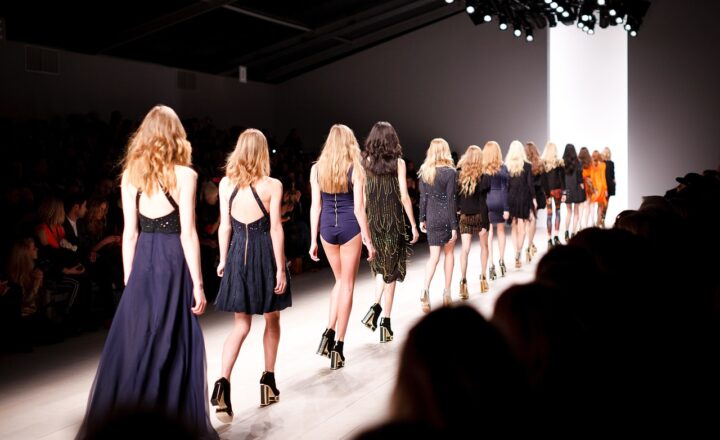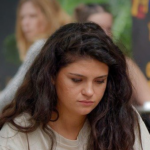
Fashion is an ever-evolving art form that reflects cultural shifts, technological advancements, and social movements. From the groovy styles of the 1970s to the sleek minimalism of the 2020s, fashion has undergone significant transformations in its approach, aesthetics, and significance. In this article, we will take a visual journey through the fashion trends spanning five decades, examining key styles, influential designers, and cultural contexts that shaped each era.
1. The 1970s: Freedom and Individuality
The 1970s were marked by a sense of liberation following the social upheavals of the 1960s. This decade saw the emergence of various fashion movements, including disco, bohemian, and punk. The predominant themes were freedom of expression, individuality, and a rejection of traditional norms.
- Key Styles: Bell-bottoms, maxi dresses, platform shoes, and colorful prints. Bohemian styles characterized by flowy fabrics and ethnic prints gained popularity, especially among the youth counterculture.
- Influential Designers: Designers like Halston and Yves Saint Laurent pushed boundaries with their innovative designs, blending high fashion with ready-to-wear styles.
- Cultural Context: The rise of the women’s liberation movement impacted fashion significantly, leading to the popularization of unisex styles and the idea that clothing could serve as a tool for self-expression and empowerment.
2. The 1980s: Excess and Glamour
The 1980s were a decade of excess, driven by a culture of consumption, power dressing, and bold styles. This era celebrated glamour and ostentation, influencing both street fashion and high couture.
- Key Styles: Shoulder pads, neon colors, leg warmers, and statement accessories. Fashion icons such as Madonna and Prince popularized edgy ensembles that reflected confidence and extravagance.
- Influential Designers: Designers like Gianni Versace and Thierry Mugler created eye-catching collections that embodied the boldness of the era. Their designs were characterized by lavish fabrics and daring silhouettes.
- Cultural Context: With the rise of MTV and the music video culture, fashion became intertwined with celebrity influence. The decade also witnessed significant changes in gender representation in fashion, with the acceptance of androgyny and alternative styles emerging from the punk scene.
3. The 1990s: Minimalism and Grunge
The 1990s introduced a significant shift towards minimalism, influenced by artistic and economic changes. It was also the decade that gave birth to the grunge movement, which rejected the excesses of the previous decade.
- Key Styles: Baggy jeans, crop tops, flannel shirts, and Doc Martens. The contrast between the polished looks seen on runways and the raw, casual styles of grunge exemplified the decade’s diversity.
- Influential Designers: Calvin Klein, with his minimalist aesthetic, and Marc Jacobs, who brought grunge fashion to the forefront, both significantly influenced the trends.
- Cultural Context: The rise of hip-hop culture and streetwear began to emerge as dominant forces in the fashion landscape, characterized by oversized silhouettes and bold graphics, shifting the dynamics of haute couture.
4. The 2000s: Eclectic Styles and Technological Influence
The 2000s were defined by a fusion of styles, with influences ranging from pop culture, internet-driven aesthetics, to the rise of fast fashion. The era was a playground for experimentation and self-expression.
- Key Styles: Low-rise jeans, cargo pants, and logo-centric apparel dominated. Hip-hop fashion played a significant role, often characterized by oversized fits and bright colors.
- Influential Designers: Iconic brands like Abercrombie & Fitch and Ed Hardy gained massive popularity, while high-fashion houses began to merge streetwear into their collections.
- Cultural Context: The advent of social media platforms like MySpace and Instagram allowed young designers to showcase their work and connect with a global audience, leading to an explosion of new trends and influencers shaping the fashion scene.
5. The 2010s: Sustainability and Diversity
As we moved into the 2010s, fashion began to recognize its social and environmental responsibilities. The focus shifted toward sustainability, inclusivity, and diversity within the industry, reflecting broader societal values.
- Key Styles: Athleisure, sustainable fashion, and vintage style resurgence became popular, with a focus on buying less but choosing thoughtfully.
- Influential Designers: Brands like Stella McCartney and Patagonia led the charge on sustainable fashion, advocating for ethical practices while appealing to a more conscious consumer base.
- Cultural Context: #MeToo and body positivity movements significantly influenced fashion, promoting diverse body types and elevating voices within marginalized communities.
6. The 2020s: Digital Fashion and Innovation
The 2020s have kicked off with an emphasis on digital fashion, virtual shows, and the fusion of technology and clothing. As a response to global challenges, fashion is adapting rapidly.
- Key Styles: Comfort-driven designs continue to thrive, as seen in the rise of loungewear and work-from-home attire. Also, digital and augmented reality fashion is gathering momentum.
- Influential Designers: Designers are experimenting with technology, as seen in virtual fashion shows and NFT fashion collections.
- Cultural Context: The pandemic has shifted the focus toward local production and sustainable materials, reinforcing the notion of buying small and supporting local artisans.
Conclusion: A Continual Evolution
Fashion is a reflection of societal change, artistic expression, and technological advancements. The journey from the vibrant styles of the 1970s to the innovative digital approaches of the 2020s signifies that fashion will continue to evolve and adapt in response to the world around us. Through this visual exploration of five decades of trends, we can appreciate the diversity of expression and innovation that each era has offered. Moving forward, the themes of sustainability, inclusivity, and technology will likely define the next chapters of fashion history.
As we celebrate this rich tapestry of fashion history, one thing remains clear: every stitch tells a story, and the fabric of our culture is woven with the threads of our collective experiences. As fashion continues to evolve, it holds the potential to shape our future in exciting and sustainable ways.






